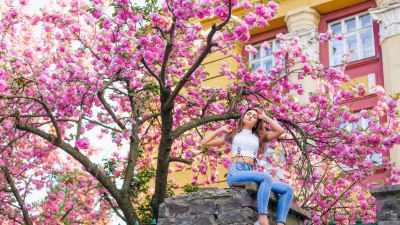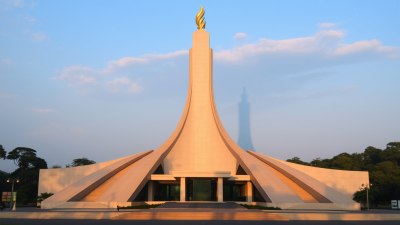Unusual Traditions You Can Only Witness Once a Year
Explore unique annual traditions from around the world that offer a glimpse into diverse cultures.

Image by wavebreakmedia on Freepik
Every year, cultures around the globe celebrate unique traditions that captivate audiences and provide deep insights into their cultural heritage. From colorful festivals to solemn rituals, these unusual traditions showcase the rich diversity of human expression and the significance of annual celebrations. In this article, we will delve into several unusual traditions that can only be witnessed once a year, each distinct in its own right.
1. La Tomatina - Spain
La Tomatina is a peculiar festival that takes place in Buñol, a town near Valencia, Spain. This famous food fight occurs on the last Wednesday of August each year and involves participants throwing tomatoes at each other. Originating in the 1940s, the tradition started as a playful protest during a local festival and has since evolved into a massive, vibrant event that attracts tourists from around the world. Thousands gather to enjoy the spectacle, culminating in a joyful mess of overripe tomatoes staining the streets.
2. Diwali - India
Diwali, also known as the Festival of Lights, is one of the most significant Hindu festivals celebrated throughout India and in various parts of the world. This five-day festival generally occurs between October and November, heralding the arrival of winter and the triumph of light over darkness. Families decorate their homes with diyas (oil lamps) and colorful rangoli designs while engaging in prayer, feasting, and firework displays. Special prayers are conducted to honor Lady Lakshmi, the goddess of wealth, symbolizing prosperity and joy as families seek blessings for the year ahead.
3. Burning Man - USA
Burning Man is an annual art and self-expression festival held in the Black Rock Desert of Nevada. Originating in 1986 and transforming into a week-long event by the early 1990s, participants come together to create a temporary city devoted to community, art, self-expression, and self-reliance. Taking place in late August to early September, the festival culminates with the burning of a large wooden effigy, symbolizing the community's dynamic, ephemeral nature. Each year, new themes and art installations emerge, keeping the spirit of Burning Man alive and ever-evolving.
4. Harbin Ice Festival - China
The Harbin Ice and Snow Festival, held annually in Harbin, Heilongjiang Province, is one of the world's largest ice and snow festivals. Beginning in early January and running for about a month, this extraordinary event showcases stunning sculptures crafted from blocks of ice pulled from the nearby Songhua River. Visitors can marvel at intricate ice castles, slides, and art installations illuminated by colorful lights. The festival not only highlights the artistry of ice sculptors from around the world but also allows attendees to engage in activities like ice skating and snowboarding in a breathtaking winter wonderland.
5. Songkran - Thailand
Songkran, the traditional Thai New Year celebration, takes place every year from April 13th to 15th. This joyous festival signifies the start of the new solar year, marked by water-based celebrations. Participants engage in lively water fights as a symbol of washing away sins and misfortunes from the previous year. Streets are filled with laughter, splashing water, and vibrant parades featuring traditional Thai dance and music. Visitors to Thailand during this season can experience the joyous atmosphere as locals and tourists alike join in the fun.
6. Day of the Dead - Mexico
El Día de los Muertos, or the Day of the Dead, is a widely celebrated Mexican tradition that occurs on November 1st and 2nd, coinciding with the Catholic holidays of All Saints' Day and All Souls' Day. This vibrant festival honors deceased loved ones through altars adorned with photographs, favorite foods, and traditional marigolds. Families gather to celebrate the lives of the departed, sharing stories and memories in an atmosphere filled with love and remembrance. The Day of the Dead uniquely blends indigenous customs with Catholicism, depicting a deep cultural understanding of life and death.
7. Holi - India
Holi, the festival of colors, is a joyous celebration held primarily in India and Nepal, occurring on the full moon day in the Hindu month of Phalguna (usually March). This lively event welcomes the arrival of spring, characterized by throwing colored powders, singing, dancing, and feasting. Holi fosters unity and breaks barriers as people of all ages and backgrounds come together to rejoice. Revelers visit friends and family, offering sweets and water, symbolizing forgiveness and the celebration of communal harmony. The vibrant atmosphere, coupled with the beautiful colors, creates an unforgettable experience for participants.
8. Oktoberfest - Germany
Oktoberfest, held annually in Munich, Germany, is the world's largest Volksfest (beer festival and traveling funfair). Running from late September to the first weekend in October, Oktoberfest attracts millions, who gather to enjoy Bavarian culture through traditional food, music, and beer. Attendees don traditional attire, such as lederhosen and dirndls, while indulging in pretzels, sausages, and, of course, a variety of local brews. Beyond the beer tents, the festival features numerous carnival rides and games, making it an event for people of all ages to enjoy.
9. Up Helly Aa - Scotland
Up Helly Aa is an extraordinary fire festival celebrated in Shetland, Scotland, on the last Tuesday of January. This unique event honors Viking heritage through a grand torch-lit procession, culminating in the burning of a Viking longship. Participants dress in Viking attire, carrying torches as they march through the streets in a spectacular show of fire and culture. As the longship is set ablaze, the community comes together to celebrate their roots with traditional music, dancing, and feasting, creating a spectacle that captures the essence of Shetland’s history.
10. Gion Matsuri - Japan
Gion Matsuri is one of the most famous and significant festivals in Japan, held annually during the month of July in Kyoto. With origins tracing back to the 9th century, this month-long event highlights traditional Japanese culture and features beautiful floats adorned with intricate designs. The festival's most renowned event occurs on July 17th, culminating in a grand parade showcasing stunningly decorated floats. The festival also emphasizes specific rituals, including purification and prayers for a good harvest. Visitors to Kyoto during this time can experience the breathtaking beauty and cultural richness that Gion Matsuri has to offer.
These unusual traditions provide window views into the unique cultural practices observed worldwide. From heartwarming community gatherings to festive displays of joy and creativity, these annual celebrations serve as reminders of our shared humanity and the colorful tapestry woven by diverse traditions around the globe. Experiencing any of these events creates unforgettable memories and fosters a greater appreciation for the rich cultural heritage that defines our world.











